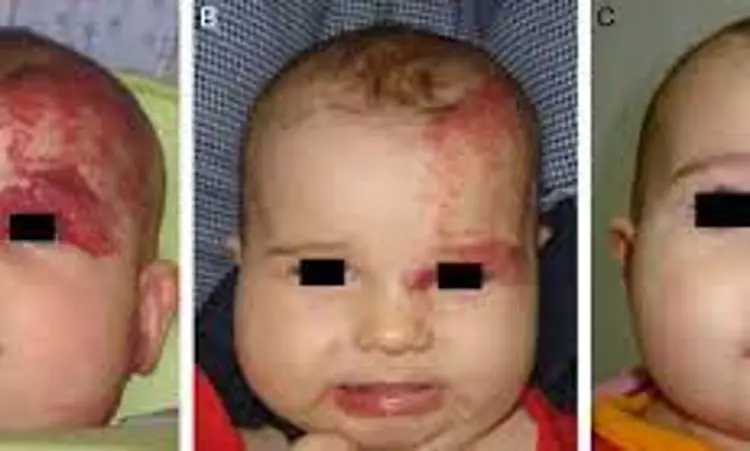- Home
- Medical news & Guidelines
- Anesthesiology
- Cardiology and CTVS
- Critical Care
- Dentistry
- Dermatology
- Diabetes and Endocrinology
- ENT
- Gastroenterology
- Medicine
- Nephrology
- Neurology
- Obstretics-Gynaecology
- Oncology
- Ophthalmology
- Orthopaedics
- Pediatrics-Neonatology
- Psychiatry
- Pulmonology
- Radiology
- Surgery
- Urology
- Laboratory Medicine
- Diet
- Nursing
- Paramedical
- Physiotherapy
- Health news
- Fact Check
- Bone Health Fact Check
- Brain Health Fact Check
- Cancer Related Fact Check
- Child Care Fact Check
- Dental and oral health fact check
- Diabetes and metabolic health fact check
- Diet and Nutrition Fact Check
- Eye and ENT Care Fact Check
- Fitness fact check
- Gut health fact check
- Heart health fact check
- Kidney health fact check
- Medical education fact check
- Men's health fact check
- Respiratory fact check
- Skin and hair care fact check
- Vaccine and Immunization fact check
- Women's health fact check
- AYUSH
- State News
- Andaman and Nicobar Islands
- Andhra Pradesh
- Arunachal Pradesh
- Assam
- Bihar
- Chandigarh
- Chattisgarh
- Dadra and Nagar Haveli
- Daman and Diu
- Delhi
- Goa
- Gujarat
- Haryana
- Himachal Pradesh
- Jammu & Kashmir
- Jharkhand
- Karnataka
- Kerala
- Ladakh
- Lakshadweep
- Madhya Pradesh
- Maharashtra
- Manipur
- Meghalaya
- Mizoram
- Nagaland
- Odisha
- Puducherry
- Punjab
- Rajasthan
- Sikkim
- Tamil Nadu
- Telangana
- Tripura
- Uttar Pradesh
- Uttrakhand
- West Bengal
- Medical Education
- Industry
What is the best time for withdrawal of propranolol in infants with infantile hemangiomas?

The study published in the Journal of the American Academy of Dermatology suggests that the best time to withdraw propranolol to avoid the risk of relapse is when the patient is older than 13 months and has completed 3 months of maintenance therapy.
Relapse of infantile hemangiomas (IHs) after withdrawal from propranolol treatment is common. Early withdrawal is believed to increase the risk of relapse. A study was done to determine the optimal time to discontinue propranolol treatment for IHs.A prospective study conducted at a tertiary referral center. RESULTS: Compared to withdrawal after 1-month maintenance treatment, withdrawal after 3-months maintenance, corresponding achieving maximum regression of IHs, was associated with a lower major relapse rate (P=0.041). The relapse (P=0.055) and adverse event rates (P=0.154) between the two withdrawal modes were not statistically significant. Compared with direct withdrawal, the relapse (P=0.396), major relapse (P=0.963), and adverse event rates (P=0.458) of gradual withdrawal were not statistically different. Patients with/without relapse could be best distinguished according to whether withdrawal followed a 3-months maintenance and age >13 months (AUC=0.603). Patients with/without major relapse could be best distinguished according to whether withdrawal was accompanied by 3-months maintenance (AUC=0.610). The optimal propranolol withdrawal time to avoid relapse is when the patient is aged >13 months and the lesion has maintained for 3 months after reaching maximum regression, while the optimal time to prevent major relapse is after 3 months of maintenance.
Reference:
Journal of the American Academy of Dermatology. Exploration of the Optimal Time to Discontinue Propranolol Treatment in Infantile Hemangiomas: A Prospective Study. J Am Acad Dermatol 2023 Dec 28;[EPub Ahead of Print], L Wang, W Wang Mm, Z Zhou, J Li, Z Li, R Lv, G Xu, J Bi, R Huo
Keywords:
the Journal of the American Academy of Dermatology, Propranolol Treatment, Infantile Hemangiomas, L Wang, W Wang Mm, Z Zhou, J Li, Z Li, R Lv, G Xu, J Bi, R Huo
Dr. Shravani Dali has completed her BDS from Pravara institute of medical sciences, loni. Following which she extensively worked in the healthcare sector for 2+ years. She has been actively involved in writing blogs in field of health and wellness. Currently she is pursuing her Masters of public health-health administration from Tata institute of social sciences. She can be contacted at editorial@medicaldialogues.in.
Dr Kamal Kant Kohli-MBBS, DTCD- a chest specialist with more than 30 years of practice and a flair for writing clinical articles, Dr Kamal Kant Kohli joined Medical Dialogues as a Chief Editor of Medical News. Besides writing articles, as an editor, he proofreads and verifies all the medical content published on Medical Dialogues including those coming from journals, studies,medical conferences,guidelines etc. Email: drkohli@medicaldialogues.in. Contact no. 011-43720751


